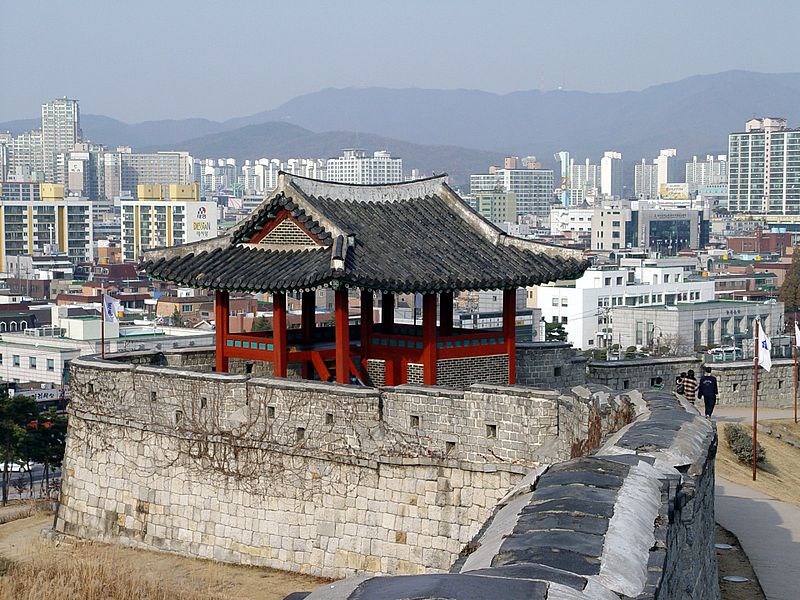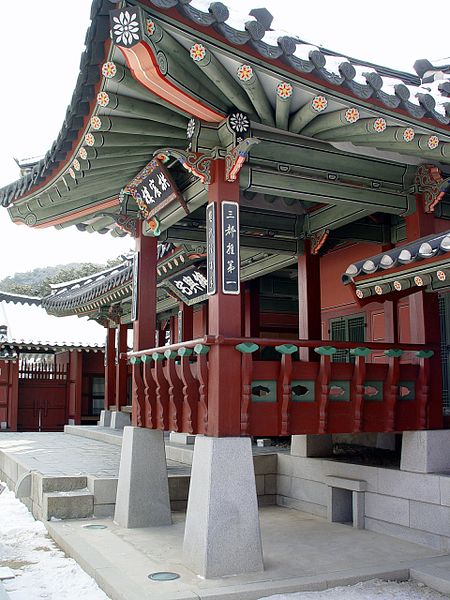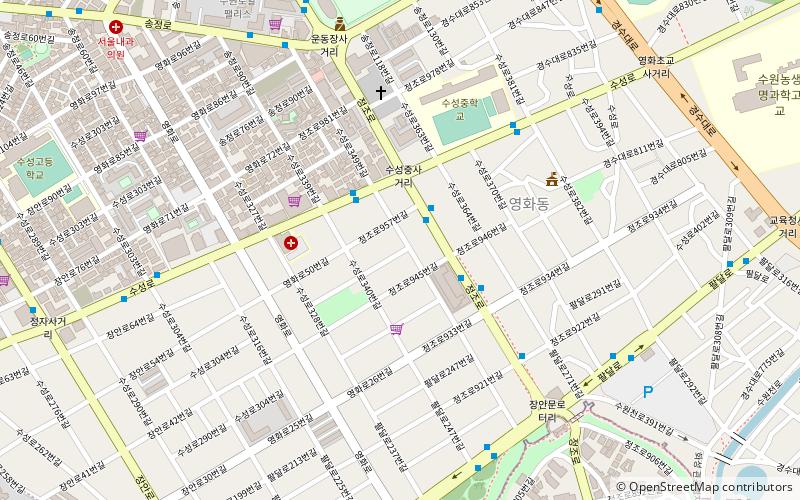Hwaseong Fortress, Suwon

Facts and practical information
Hwaseong Fortress, a remarkable historical structure, stands as a proud testament to the ingenuity of the late Joseon Dynasty. Situated in the heart of Suwon, South Korea, this extensive city wall was constructed between 1794 and 1796 under the guidance of King Jeongjo. The fortress, which spans both flat and hilly terrain, covers a considerable distance of approximately 5.74 km and features a unique blend of Eastern and Western architectural styles.
This fortified wall was built for multiple purposes: to house the remains of King Jeongjo's father, to establish a new political hub away from the capital's influence, and to demonstrate the king's filial piety. The fortress's impressive design incorporates a variety of defensive features, such as floodgates, watchtowers, command posts, and multiple secret gates, all strategically positioned to provide maximum security and efficiency.
The fortress is not only a military structure but also an aesthetic masterpiece. The Janganmun gate, with its grandiose double roofing, is the largest and most ornate of the four main gates. The Hwahongmun gate showcases an elegant seven-arch style, allowing the Suwoncheon stream to flow gracefully beneath it.
Having survived the test of time, Hwaseong Fortress was inscribed as a UNESCO World Heritage site in 1997, highlighting its historical significance and the exceptional preservation of its original features. The fortress remains a symbol of Korean cultural heritage, showcasing the advanced engineering skills, strategic military planning, and artistry of the period.
Today, Hwaseong Fortress is not only a must-see historical site but also a place of leisure and cultural activities. Visitors can walk along the fortress walls, enjoying panoramic views of Suwon city. The annual Hwaseong Cultural Festival breathes life into the fortress's history with reenactments, traditional performances, and various interactive events.
Hwaseong Fortress – popular in the area (distance from the attraction)
Nearby attractions include: Janganmun, Paldal-gu, Jeongja-dong, Gamaekjip.
Frequently Asked Questions (FAQ)
Which popular attractions are close to Hwaseong Fortress?
How to get to Hwaseong Fortress by public transport?
Bus
- 화성어차 출발지점 (10 min walk)
- 센트라우스.서수원검사소 • Lines: 92 (29 min walk)
Metro
- Maegyo • Lines: 272 (26 min walk)
- 매교 • Lines: 272 (26 min walk)











